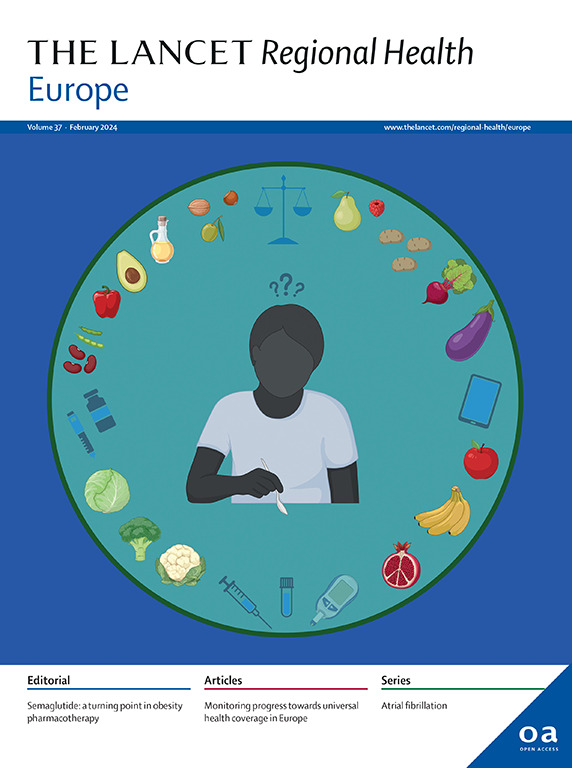英国自杀的时空趋势和社会环境决定因素(2002-2022):一项基于生态人口的研究
IF 13
Q1 HEALTH CARE SCIENCES & SERVICES
引用次数: 0
摘要
在实施自杀预防战略的过去二十年中,英格兰的自杀率呈现波动模式,从2000年代初(2002年每10万人死亡10.3人)下降到2010年左右(2007年每10万人死亡9.0人),然后逐渐上升(2022年每10万人死亡10.7人)。目前尚不清楚这种模式是因地区而异,还是受社会环境因素的影响,还是两者兼而有之。我们的目的是评估2002年至2022年英国自杀的时空趋势,同时研究社会环境特征的作用。在这项生态研究中,我们分析了英国国家统计局关于自杀死亡的数据,探索了英格兰(2002-2022)的时空模式。采用基于贝叶斯层次框架的栅格泊松模型,研究了地区贫困程度、民族密度、人口密度、光污染、铁路和公路网密度以及绿地构成等因素对自杀风险的影响。从2002年到2022年,整个英格兰的自杀风险总体上没有实质性变化(- 4.26%;95%可信区间(CrI): - 8.95%, 0.72%)。风险最低(伦敦)和最高(东北)地区的差异为39.2% (95% CrI: 34.1%, 44.3%)。我们发现,对于每个变量的一个标准差变化,自杀风险随剥夺(20.06%,95% CrI: 18.48%, 21.65%)、铁路网络密度(1.37%,95% CrI: 0.32%, 2.46%)和道路网络密度(5.16%,95% CrI: 3.12%, 7.46%)而增加,而随民族密度(- 7.47%,95% CrI: - 8.91%, - 6.00%)、人口密度(- 5.42%,95% CrI: - 7.34%, - 3.25%)、光污染(- 4.20%,95% CrI: - 5.71%, - 2.72%)和绿地构成(- 6.43%,95% CrI: - 7.94%, - 4.99%)而降低。在过去的20年里,我们没有发现证据支持英格兰自杀率的下降,我们的发现突出了社区概况,其特点是更大的剥夺,隔离,以及进入公路/铁路网络,自杀风险最高。这应该有助于将未来的研究重点放在了解这些因素是自杀风险的驱动因素上,从而开发出有效的区域一级干预措施,并在最需要的地方对这些方法进行有针对性的投资。资助惠康信托,UKHSA, MRC, NIHR通过其HPRU, HDRUK, NIHR伦敦大学学院医院(UCLH)生物医学研究中心(BRC)。本文章由计算机程序翻译,如有差异,请以英文原文为准。
Spatio-temporal trends and socio-environmental determinants of suicides in England (2002–2022): an ecological population-based study
Background
Over the last two decades of suicide prevention strategy implementation, suicide rates in England have shown a fluctuating pattern, declining from the early 2000s (10.3 deaths per 100,000 in 2002) until around 2010 (9.0 deaths per 100,000 in 2007), then gradually increasing (10.7 deaths per 100,000 in 2022). It remains unclear whether the pattern varies by local area, the influence of the socio-environmental factors or a combination of both. Our aim was to evaluate spatio-temporal trends of suicides in England from 2002 to 2022 whilst examining the role of socio-environmental characteristics.
Methods
In this ecological study, we analysed Office for National Statistics data on deaths by suicide, exploring spatial and temporal patterns in England (2002–2022). Using a Hurdle Poisson model fit within a Bayesian hierarchical framework, we assessed the effects of local area level deprivation, ethnic density, population density, light pollution, railway and road network densities and greenspace composition on suicide risk.
Findings
From 2002 to 2022, suicide risk across England showed no substantial change overall (−4.26%; 95% Credible Interval (CrI): −8.95%, 0.72%). The difference between the regions with the lowest (London) and highest (North East) risk was 39.2% (95% CrI: 34.1%, 44.3%). We found that for one standard deviation change in each covariate, suicide risk increased with deprivation (20.06%; 95% CrI: 18.48%, 21.65%), railway network density (1.37%; 95% CrI: 0.32%, 2.46%), and road network density (5.16%; 95% CrI: 3.12%, 7.46%) while risk decreased with ethnic density (−7.47%; 95% CrI: −8.91%, −6.00%), population density (−5.42%; 95% CrI: −7.34%, −3.25%), light pollution (−4.20%; 95% CrI: −5.71%, −2.72%), and greenspace composition (−6.43%; 95% CrI: −7.94%, −4.99%).
Interpretation
We did not find evidence to support a decline in suicide rates in England over the last 20 years and our findings highlight the community profiles, characterised by greater deprivation, isolation, and access to road/rail networks, where suicide risk was highest. This should help focus future research to understand these as drivers of suicide risk, leading to the development of effective area-level interventions and targeted investment in those approaches where most needed.
Funding
Wellcome Trust, UKHSA, MRC, NIHR through its HPRU, HDRUK, NIHR University College Hospital London (UCLH) Biomedical Research Centre (BRC).
求助全文
通过发布文献求助,成功后即可免费获取论文全文。
去求助
来源期刊

Lancet Regional Health-Europe
Multiple-
CiteScore
19.90
自引率
1.40%
发文量
260
审稿时长
9 weeks
期刊介绍:
The Lancet Regional Health – Europe, a gold open access journal, is part of The Lancet's global effort to promote healthcare quality and accessibility worldwide. It focuses on advancing clinical practice and health policy in the European region to enhance health outcomes. The journal publishes high-quality original research advocating changes in clinical practice and health policy. It also includes reviews, commentaries, and opinion pieces on regional health topics, such as infection and disease prevention, healthy aging, and reducing health disparities.
 求助内容:
求助内容: 应助结果提醒方式:
应助结果提醒方式:


